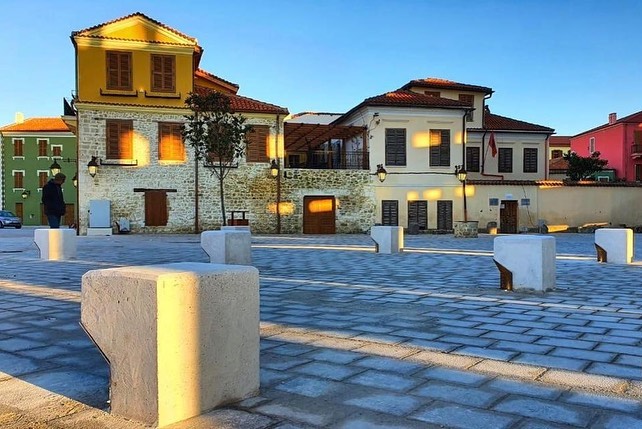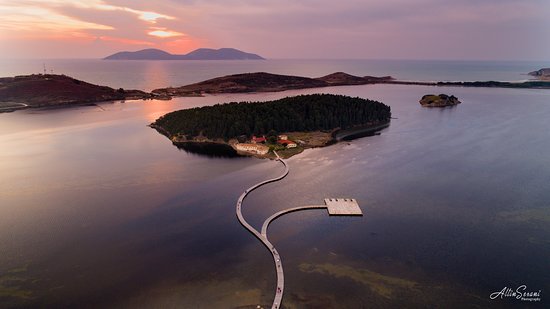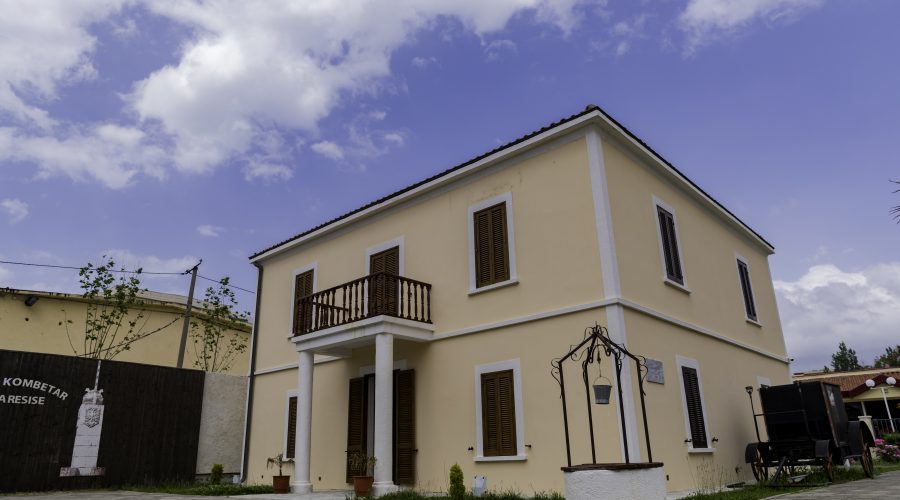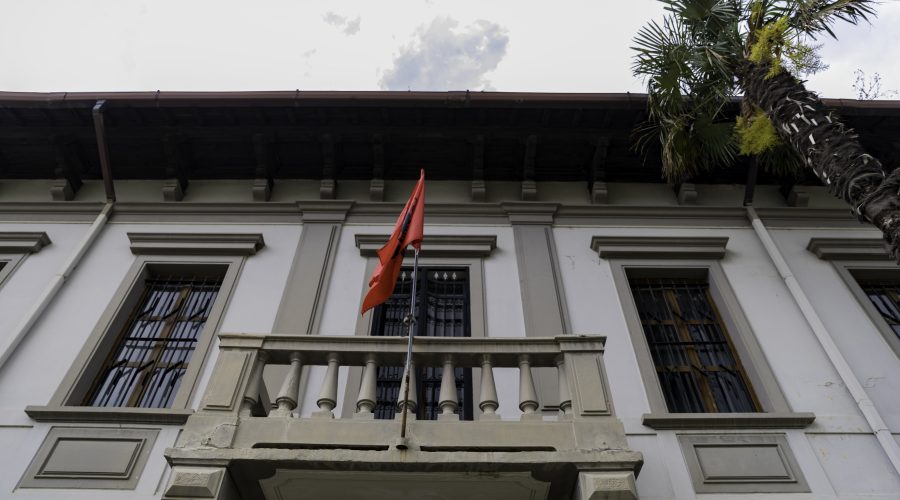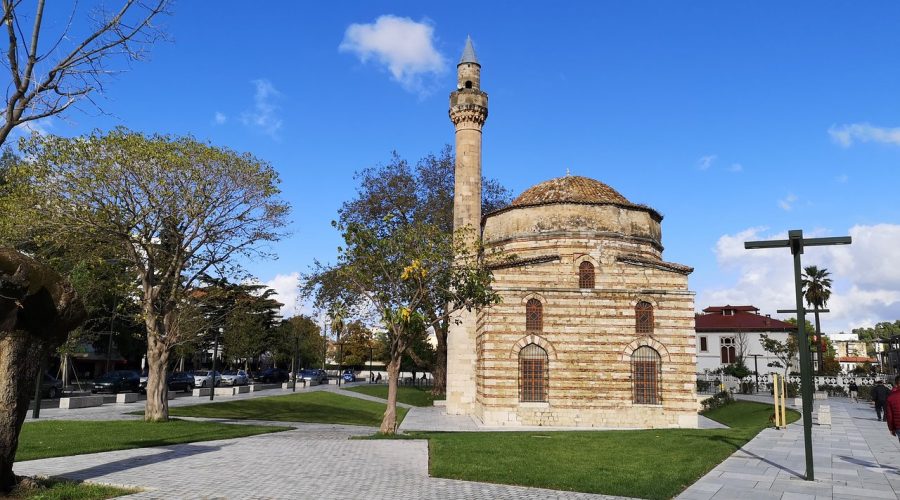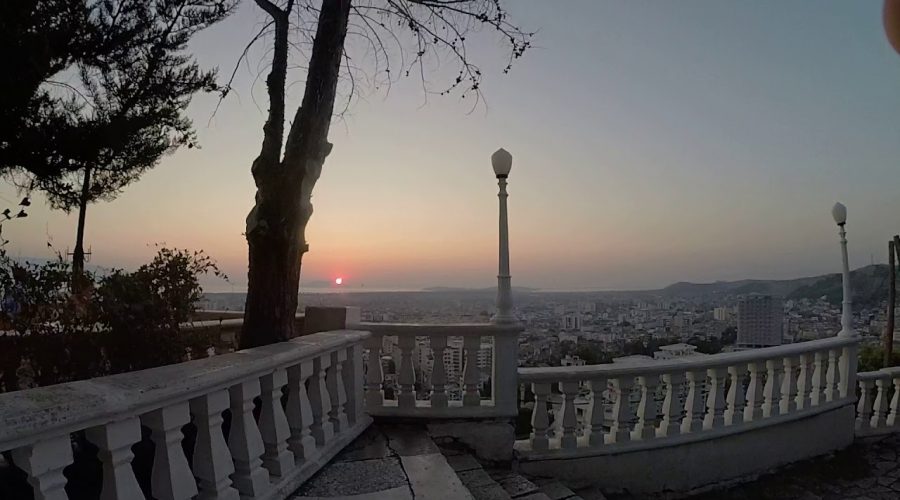-
Zvernec Monastery
Zvernec Monastery is an old byzantine monastery dedicated to Virgin Mary and situated no more than 20 minutes away from the city center, in one of the small islands of Vlora coastline. If you decide to visit Zverneci Monastery, you can visit the small island as well and can organize a picnic with our friends or family. It represents the ancient culture, architectural characteristics and the belief of Albanians in ancient times.
-
The Mosque of Muradie
The Mosque of Muradie is an old and beautiful building in the city of Vlora which dates back in 1542 and legends say that it may have been constructed by the then Sultan of Ottoman Empire, Sultan Sulejman when he visited Vlora for purposes of war against Italy and other western European kingdoms of that time. The mosque survived to the mass destruction of cult places in 1967 and was transformed by the then communist regime into the Museum of Architecture of Vlora city.
The mosque is build by red and white stones and was built by the renowned Albanian architect of that time, Sinan Pasha, which had built dozens of important buildings in the territories of the Ottoman Empire.
-
Flag Square
Flag Square is the most important spot of Vlora city which shows proudly the contribution and the patriotism of Vlora in winning and declaring the independence of Albania in November 28th, 1912.
It is the main plaza in Vlora and a tourist attraction not only to foreign tourists but also for Albanians throughout the country. If you visit the square you will see the Monument of Independence, created by the Albanian sculptor Mumtaz Dhrami as a remembrance of the day Albania was declared independent.
-
Kanine Castle
Southeast of Vlore is a sprawling hilltop fortress that was constructed in the 4th century BC when this region was settled by Ancient Greek tribes. It stands on Shushica Mountain, 380 metres above sea level and covers almost 4,000 hectares, protecting the modern Kanine village. In the year 500 the Byzantine emperor Justinian I rebuilt the settlement and the castle remained in use for at least the next century, serving as a stronghold for the Principality of Valona in medieval times, back when Vlore was a vassal of the Serbian Empire.
-
Museum of Historic Relics
From 1912 the building of this museum contained offices for the earliest Albanian government, a role it held for half a century. In what is now Vlore County there were a host of ancient cities, and the Museum of Historic Relics is where many artefacts discovered at these sites are on display. Vlore also witnessed some momentous events in 20th-century Albanian history and there are displays devoted to this period. Naturally the declaration of independence features prominently, but you can also find out about the Vlore War in 1920 between Italian forces and Albanian nationalists.
-
Museum of National Independence
Set in the southern part of Vlore, not far from the port, the Museum of National Independence was established in 1936 and was Albania’s first ever museum. The aim of the museum is to create an idea of Albanian national identity and commemorate the country’s declaration of independence in 1912. Ismail Qemali, founder of independent Albania and the country’s first head of state, set up his government in this very building for the first six months of Albania’s existence.
-
Ethnographic Museum
This attraction is found in a neo-Renaissance house that was completed in the mid-1800s, making it one of the oldest buildings in Vlore. The Ethnographic Museum presents the traditional culture, crafts and costume of the Vlore region, and is listed as an Albanian Monument of Culture. One of the most valuable pieces here is an original 19th-century waistcoat woven in the local style. In all there are 300 pieces on display, many of which showcase Vlore’s expertise in woodworking, carpet-weaving and ornamental metalwork.
- Kuzum Baba
This natural terrace is the highest point in Vlore. It stands at 30 metres above the sea and is named after Father Kuzum, a local spiritual leader from the Muslim Bektashi sect. Word is that Quzum Baba is also buried close by, but his grave is unmarked. At the top of the hill is a Bektashi temple or tekke from the 1600s, regarded as one of the finest examples in Albania. For the next two hundred years the Bektashis were highly influential throughout Albania, but their influence waned in the 19th century when they became increasingly persecuted within the Ottoman Empire.
-
Historical Centre
the Justin Godart Building Ensemble. The area is full with historical milestones, not just for the city, but the country as a whole. This intervention aims to bring to light one of the most important historical areas within the city that holds testimony to the city’s past.
Minimum Group Number: 10 persons

